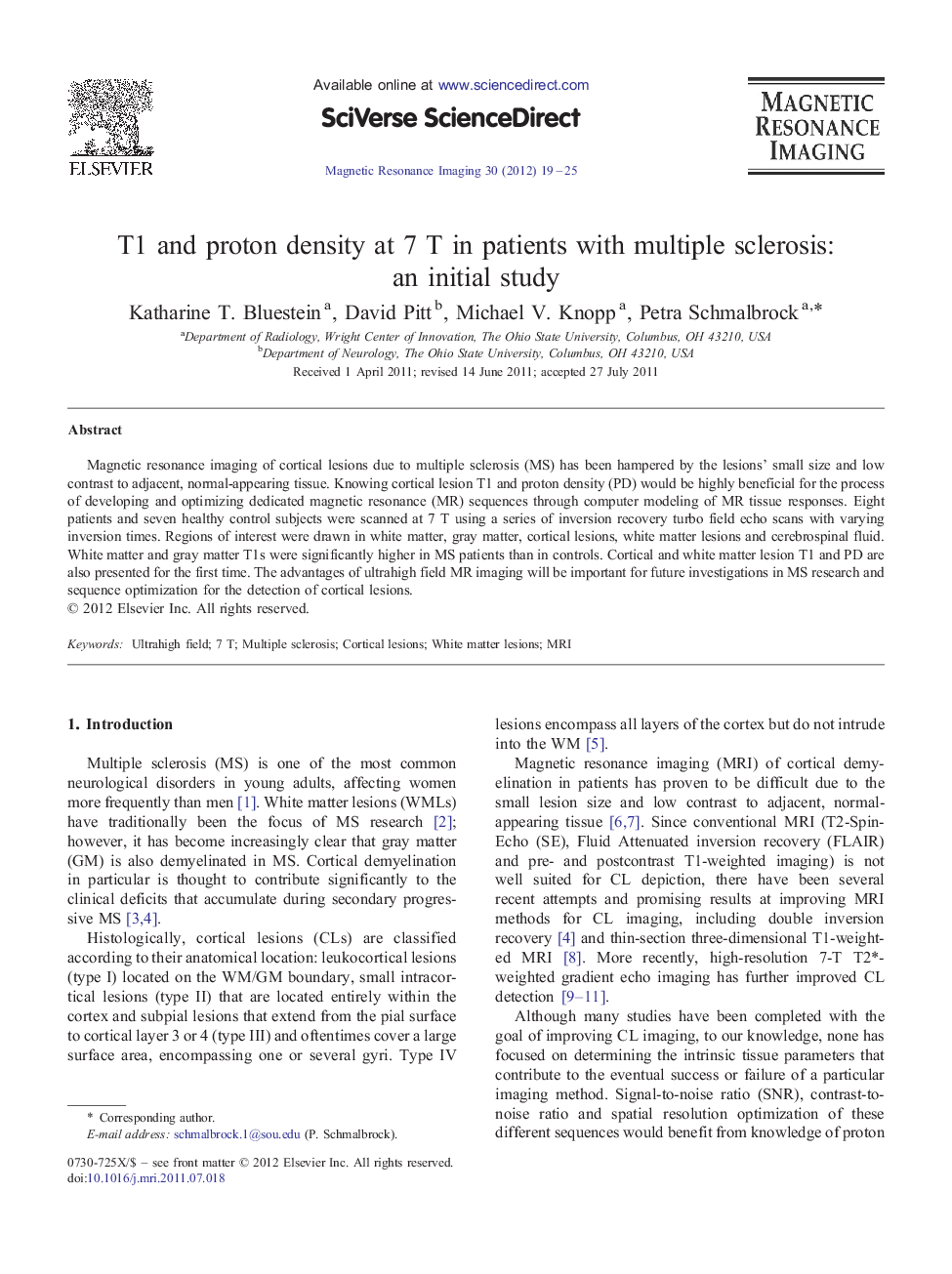| Article ID | Journal | Published Year | Pages | File Type |
|---|---|---|---|---|
| 1806519 | Magnetic Resonance Imaging | 2012 | 7 Pages |
Magnetic resonance imaging of cortical lesions due to multiple sclerosis (MS) has been hampered by the lesions' small size and low contrast to adjacent, normal-appearing tissue. Knowing cortical lesion T1 and proton density (PD) would be highly beneficial for the process of developing and optimizing dedicated magnetic resonance (MR) sequences through computer modeling of MR tissue responses. Eight patients and seven healthy control subjects were scanned at 7 T using a series of inversion recovery turbo field echo scans with varying inversion times. Regions of interest were drawn in white matter, gray matter, cortical lesions, white matter lesions and cerebrospinal fluid. White matter and gray matter T1s were significantly higher in MS patients than in controls. Cortical and white matter lesion T1 and PD are also presented for the first time. The advantages of ultrahigh field MR imaging will be important for future investigations in MS research and sequence optimization for the detection of cortical lesions.
